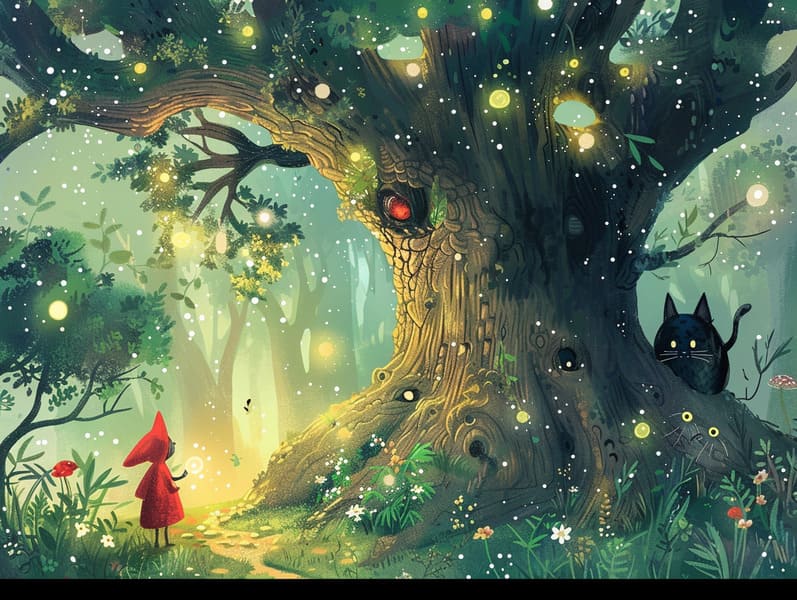The Birth of Short Fairy Tales and Its Unchanging Spell.
The Birth of Short Fairy Tales and Its Unchanging Spell.
Blog Article

Grimm's fairy tales have timeless appeal. These tales have been shared from one generation to the next millennia before they were ever documented. They developed from a variety of cultures, including African traditions. They were initially narrated among elders, often carrying themes and messages concerning the societal norms and beliefs of the time.
The renowned Brothers Grimm, Jacob and Wilhelm, were among the first to compile many of these beloved stories. Their compilation, "Grimm's Folk Tales," included tales like "The Little Glass Slipper," "Little Brother and Little Sister," and "Snow White," which have since become mainstays in the world of classic fairy tales. Similarly, Hans Christian Andersen's whimsical narratives, such as "The Mermaid," and "The Ugly Duckling," have stolen hearts worldwide, solidifying their place in the pantheon of treasured fairy tales.
Even though they are old, traditional fairy tales remain as pertinent as ever, especially as children's night stories. These charming stories are now available in different formats, including gorgeously illustrated books, fantastical animations, and online fairy tales.
Their ongoing significance can be attributed to several enchanting factors:
Valuable Lessons: Timeless fairy tales often illustrate important moral lessons. Fairy tales like "The Story of the Boy Who Cried Wolf" teach the value of being truthful, while "The Hare and the Tortoise" exemplify the traits of steadfastness and unpretentiousness. These narratives offer little ones clear distinctions between correct and incorrect, building their moral compass in a gentle yet lasting way.
Compassion and Insight: Timeless fairy tales frequently involve beings facing problems and hurdles, fostering audiences to sympathize with their struggles and champion their triumphs. For instance, "Beauty and the Beast" demonstrates the significance of appreciating inner worth to know the inner self of a individual, developing awareness and knowledge.
Cultural Understanding: Many timeless fairy tales are deeply embedded in the cultural contexts from which they arose. Engaging with these tales can provide captivating looks into different cultures, enhancing a sense of cultural insight and comprehension.
Creativity and Fantasy: The fantastical elements in classic fairy tales—magical beings—activate children’s dreams. These fairy tales carry readers to magical realms, generating innovative ideas and a sense of wonder that lasts a lifetime.
Old fairy tales are not only spellbinding but also illuminating. They provide charming tools in building various brain and heart skills in young readers. When traditional fairy tales are narrated, they advance speaking abilities by showing new terms and intricate sentence structures. This practice also improves hearing perception and attentiveness, as young readers hang on every word, anticipating to see what happens next.
Furthermore, debating the themes and characters of fairy tales can foster intellectual skills and critical thinking. The young are educated to find patterns, predict happenings, and realize cause and effect. These explorations also benefit children say their thoughts and feelings, contributing to their emotional intelligence.
In today’s technological age, the existence of web-based fairy tales has made these narratives more acquirable than ever. Online resources and web apps present large libraries of old fairy tales that can be seen or listened via anytime, anywhere. Fairy tales spoken are particularly well-liked, making available an fascinating method for little ones to relish these fantastical tales. Spoken stories and spoken videos bring characters and settings to life, often augmented by mesmerizing sound effects and melodies that enhance the tale journey.
The lasting appeal of classic fairy tales lies in their ability to shift to the present while keeping hold of their key morals. Contemporary modernizations of these narratives often bring in more varied figures and modern settings, making them relatable to today’s audience. However, the essential messages of braveness, humanity, and justness remain unchanged, continuing to impact children of all ages.
Traditional fairy website tales also offer a sense of peace and predictability. They serve a neat narrative with a plain beginning, middle, and end, often finishing with the ending of conflicts and the triumph of goodness over badness. This reliability can be solacing for the young, extending a sense of constancy in an constantly changing world.
Ancient fairy tales continue to enchant and edify new generations, maintaining their wonder and relevance in modern society. As nighttime stories for kids, they serve a perfect blend of wonder and wisdom, cultivating moral values, empathy, and creativity. The abundance of online fairy tales and the sought after status of fairy tales read out loud ratify that these ancient tales remain accessible to new generations.
By defending and sharing these stories, we continue to revere the rich tapestry of human imagination and cultural heritage. Whether you are accessing a gorgeously illustrated book, exploring a electronic library, or playing an spoken story, the appeal of Grimm's fairy tales is always within reach. These fairy tales point out of the unfading spell of stories and its ability to bind us across epochs and places.
Be it you are exploring a richly illustrated book, discovering a cyber library, or listening via an narrated book, the fascination of Grimm's fairy tales is always within reach.
These tales emphasize of the invariable impact of storytelling and its ability to unify us across centuries and lands, making a tie that charms and informs alike.